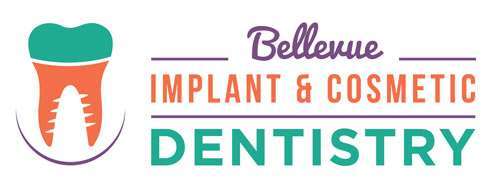At some time or another, most individuals will need dental restoration. Restoring teeth is necessary when the teeth are in poor condition due to decay or a lack of proper oral care. Modern dentistry offers a wide variety of options for dental restorations.
There are so many fantastic alternatives when it comes to dental restorations that making a decision may be tough. In the end, seeing a dentist to have your teeth examined is the best option. This article explains some of the options for dental restorations so you can make an informed decision. Use this short guide to get your dental restoration process off to a good start. The following are dental restorations and their applications.
Choosing the correct dental restoration
Dental crowns
A dental crown is often the treatment of choice when dealing with an ailing tooth. They operate as protective caps to avoid additional harm to already damaged teeth. Each tooth's unique shape and size is taken into consideration when a dental lab crafts a crown.
In most cases, dental crowns are crafted from gold, ceramic, porcelain, or some other kind of metal alloy. Crowns made of metal or gold have a longer lifespan, but they are also more apparent. Ceramic and porcelain crowns are preferred for a natural-looking dental restoration because they are sturdy and discreet.
Dental bonding
This is a common restoration that may be used to deal with a wide range of structural issues. A composite resin is immediately applied to the tooth and molded into the appropriate shape. It is one of the affordable operations done by dentists, and it may be used to address concerns such as stained teeth, minimal flaws and imperfections, crooked or misshapen teeth, and small gaps between teeth.
The composite material used may be customized to match the color of the patient's natural teeth, if desired. Applying it is similar to placing fillings, except the afflicted teeth must first be cleaned with an etching solution before the composite can be applied. The dentist hardens the composite by shining a special light on it. To complete the technique, the tooth is polished to make it shine.
Dental fillings
Dentists often recommend dental fillings when a tooth has a small problem that requires a dental restoration. It is easy to complete dental fillings by scraping away decaying tooth structures and then putting dental cement to good use in the cavity left behind. The tooth is unlikely to get deteriorated further once it has been sealed up. Cavities in children's teeth are more prevalent, hence they need fillings more often than adults.
Dental fillings are most commonly used to fill molar teeth because of their surface area. In addition, molars are more vulnerable to injury since they are used to chew and crush food.
Dental implant restorations
Dental implants have made it possible for dentists to restore lost teeth and achieve a natural-looking dentition. A damaged tooth may be restored and renewed with the use of dental implants and another prosthetic. In many cases, dental implants are utilized in conjunction with dentures or bridges to complete the restorative procedure. A dental implant-supported restorative prosthesis provides more stability and security since the implants serve as anchors.
Considerations
Think about each choice and how the procedure works before deciding on a dental restoration. Implants, for example, need time and patience to complete. To know how to prepare, it is essential to consider all aspects. Patients should also think about their long-term objectives. While some people are searching for a more attractive smile, others are hoping for improved dental function. To choose the ideal dental restoration, it is helpful to outline the treatment aim. For example, gold dental crowns may be considered for their longevity, but patients who want a more discrete treatment option may choose a composite-resin crown instead.
Dental restorations are a personal choice, and only the patient may make that choice. However, working with a dentist who specializes in repairing damaged teeth is critical throughout the procedure. If a patient needs dental crowns or fillings, dentists can give them a clear idea of how long the procedure will take and what to anticipate from it.
In conclusion
Patients have a handful of choices when it comes to dental restorations. However, it is essential to talk with a dental professional before making a decision. So please get in touch with the dental office as soon as possible to get the needed help. The dentist's job is to examine your teeth, answer your questions, and help you choose the right dental restoration for your needs.
Request an appointment here: https://www.implantdentalbellevue.com or call Bellevue Implant & Cosmetic Dentistry at (425) 249-9186 for an appointment in our Bellevue office.
Check out what others are saying about our dental services on Yelp: Dental Restorations in Bellevue, WA.
Related Posts
Will Dental Restorations Ever Fail?
Dental restorations can fail. Seeing your dentist right away can help correct the situation if it happens. Your restorations may need replacements already. Routine dental visits allow your dentist to check …
3 Common Dental Restoration Procedures
People who are diligent with oral hygiene may still experience tooth decay or damage that requires dental restorations. Even what may appear to be minor damage should be addressed and repaired …
How Does a Dentist Choose What Type of Dental Restoration is Right For You?
Dentists perform dozens of types of dental restorations, ranging from minimally invasive fillings to invasive but wholly restorative dental implants. When a dentist discusses the need for you to invest in …
What Are Dental Restorations and How Can They Help?
Getting a dental restoration is a way to repair teeth that are damaged, including chipped or cracked teeth, cavities, and worn-down enamel. There are different types of dental restorations available. The recommended …

